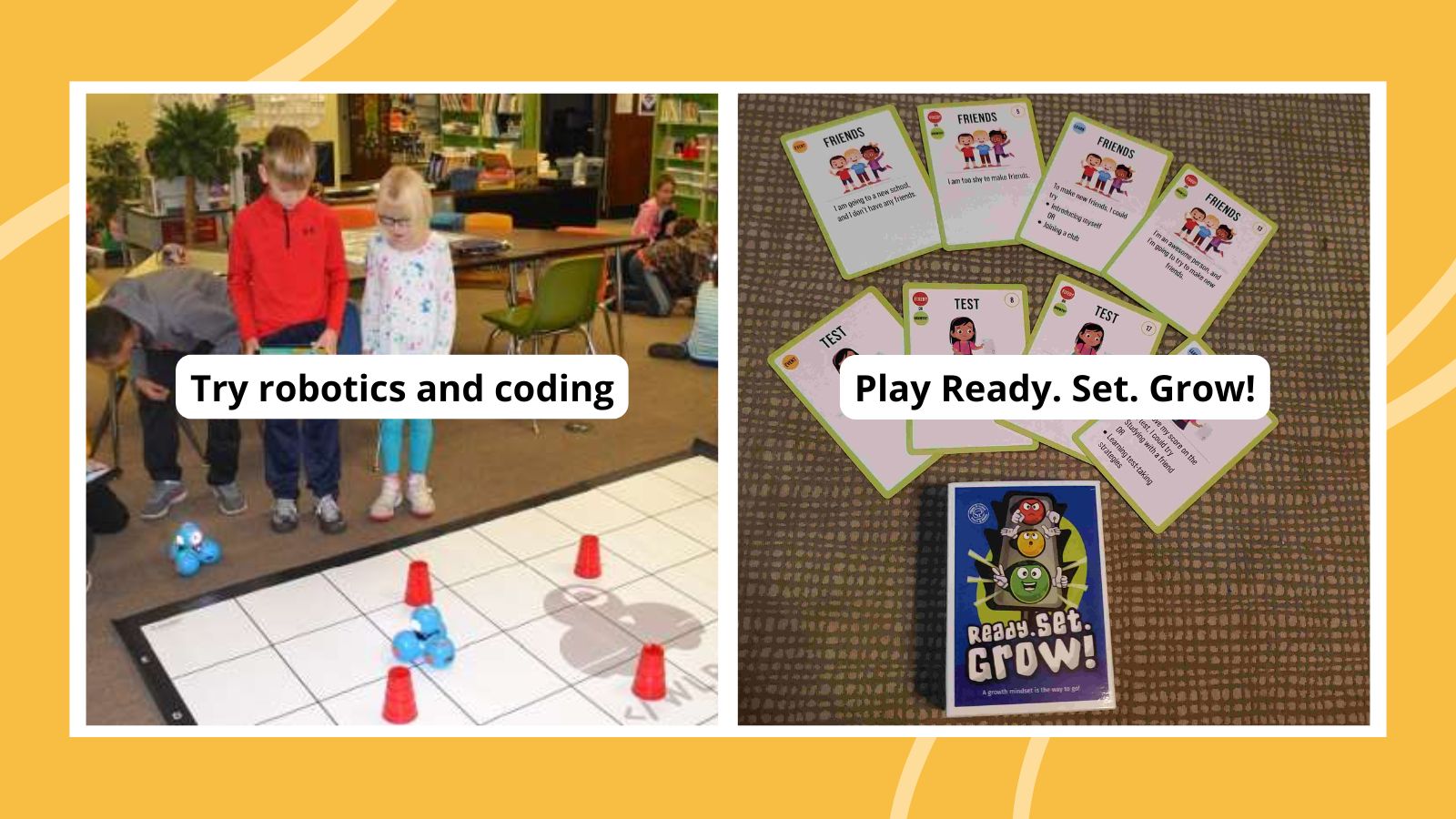Looking for ways to help kids embrace their mistakes and keep working toward success? Growth mindset activities could be the answer. This concept may not be a miracle cure for all students. But recent research shows that embracing a growth mindset has a demonstrable positive effect on learning, helping kids learn more when compared to their fixed-mindset peers.
Many educators find a growth mindset helpful in reminding kids that even though they’re struggling to do something now, it doesn’t mean that will always be the case. Learn how to open student minds to the idea that they really can learn new things, and that the effort is just as important as the achievement.
What is a growth mindset?
Psychologist Carol Dweck made the idea of fixed vs. growth mindsets famous with her book Mindset: The New Psychology of Success. Through extensive research, she found that there are two common mindsets, or ways of thinking:
- Fixed mindset: People with a fixed mindset feel that their abilities are what they are and cannot be changed. For instance, a person may believe that they’re bad at math, so they don’t bother to try. Conversely, a person may feel that because they’re smart, they don’t need to work very hard. In either case, when a person fails at something, they simply give up.
- Growth mindset: Those with this mindset believe that they can always learn new things if they make enough effort. They embrace their mistakes, learning from them and trying new ideas instead.
Dweck found that successful people are those who embrace a growth mindset. Though we all alternate between the two at times, focusing on a growth-oriented way of thought and behavior helps people adapt and change when needed. Instead of thinking “I can’t do this,” these people say, “I can’t do this YET.”
Growth mindset is key for learners. They must be open to new ideas and processes and believe they can learn anything with enough effort. Teach kids to make this mindset their default with classroom growth mindset activities like these.
Our Favorite Growth Mindset Activities
1. Read a growth mindset book
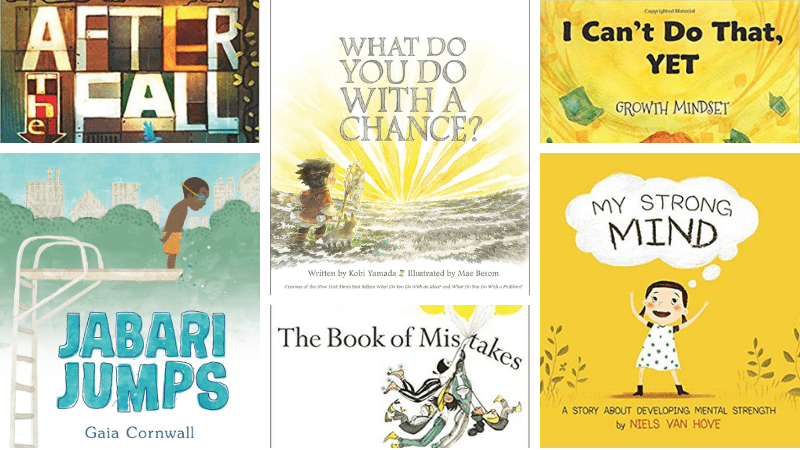
These read-alouds are perfect for story time, but don’t be afraid to try them with older students too. In fact, picture books can spark all sorts of interesting conversations among high schoolers!
Learn more: Perfect Read-Alouds for Teaching Growth Mindset
2. Learn to fold origami
Pass out square pieces of paper, then hold up an origami bird and ask kids to fold their own. Don’t provide any instructions at this point; just give them the paper and make the request. After a few minutes, talk about their frustrations. Then give them printed instructions to follow, and encourage them to ask for help if they need it. When everyone is finished, discuss learning as a process that means trying and failing, then trying again.
Try it: Easy Origami Projects (Free Printables)
3. Watch a growth mindset TED Talk
Let a real growth mindset expert (who also happens to be a fellow kid!) inspire your students. When Rebecca’s mom forced her to join student council, she turned her anger into a growth mindset instead.
4. Use project-based learning
Project-based learning uses real-world projects and student-directed activities to build knowledge and skills. Kids tackle issues that matter to them, making learning meaningful. Many students start these projects thinking there’s no way they’ll actually be able to create change or solve problems. But as they work, their mindset begins to shift, and they realize that big things are possible when you take them one smaller step at a time.
Learn more: What Is Project-Based Learning?
5. Compare fixed and growth mindsets
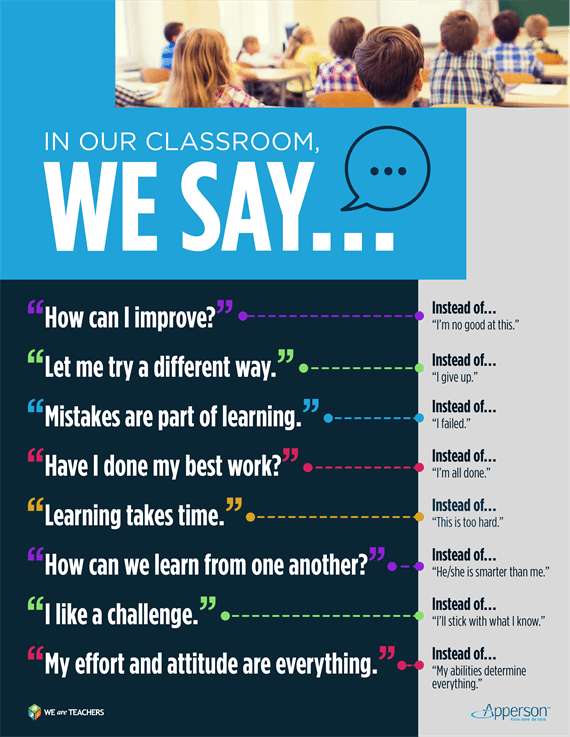
Show students examples of fixed mindset statements, and compare them with more growth-oriented examples. When students use a fixed mindset phrase, ask them to restate it from a growth standpoint instead. Get this free poster for your classroom to keep the language fresh in their minds.
Learn more: 8 Phrases That Nurture Growth Mindset (Free Poster)
6. Focus on praising the process instead of the person
When you praise a person, you’re praising traits, which they don’t really have any control over. When you praise their process, you show that you value their actions and efforts, which encourages them to keep trying even when things are difficult. Here are some examples of person praise vs. process praise:
- You aced that test! You’re so smart. ==> You aced that test! You must have studied hard.
- Of course you made the team. You’re very talented. ==> You made the team! I’m so proud of all your practice and hard work.
- You got an A in math! Good job! ==> You raised your math grade by 8 points this semester. You really persevered!
7. Change your words, change your mindset
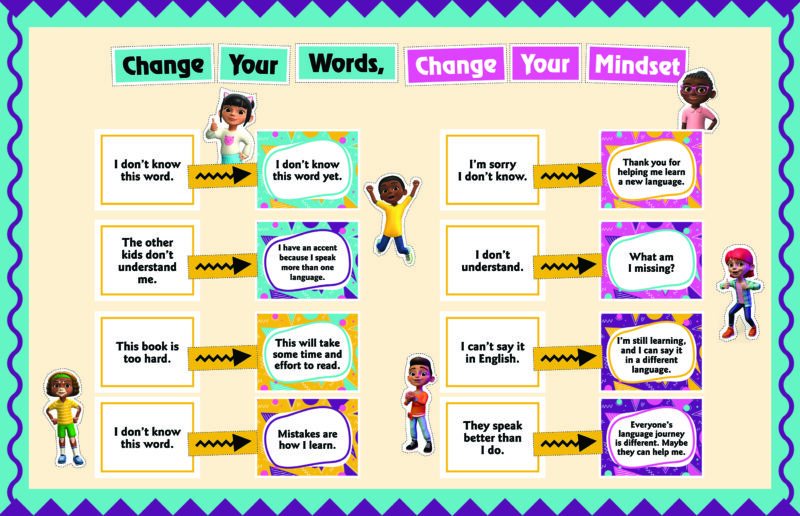
The things we say to ourselves are just as important as the efforts we make. Start by sharing fixed mindset statements like “I don’t know how” or “This is too hard.” Ask students to help you shift those statements to a growth mindset instead, saying “I don’t know how yet” or “This is hard, but I’ll keep trying.” Use our free bulletin board set for ELL or other classrooms too.
Learn more: Free “Change Your Words” Growth Mindset Bulletin Board Set
8. Set SMART goals
Working toward specific goals helps students stay focused on their progress. Help them set goals that are specific, measurable, attainable, relevant, and time-bound. Then, encourage them to map out smaller steps they’ll take on the journey to meeting those goals. Remember that the milestones can be just as important as the finish line.
Learn more: How To Do Goal-Setting With Your Students This Year
9. Reflect on inspirational quotes
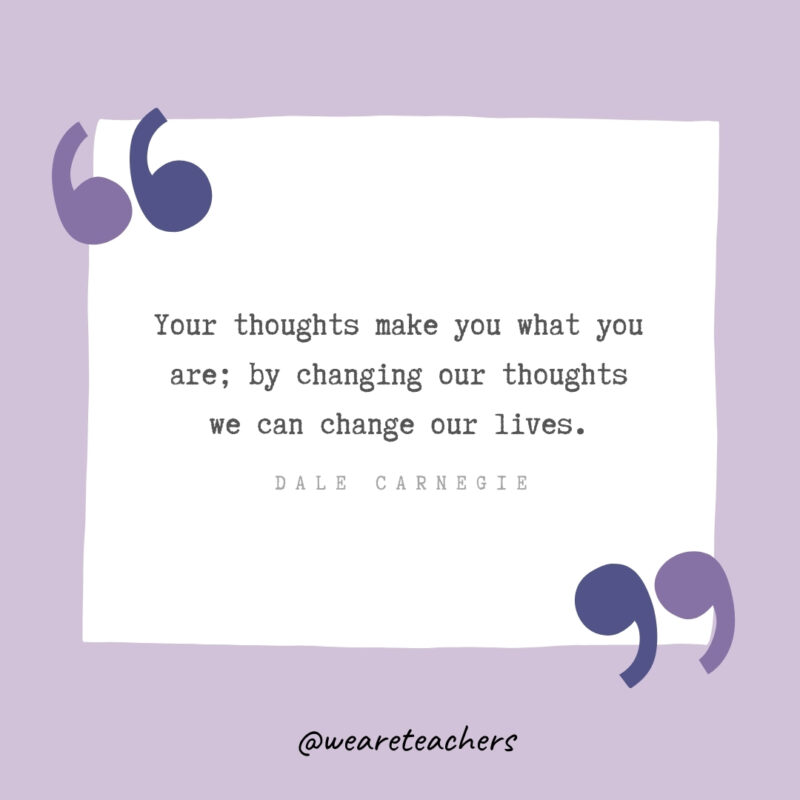
We’ve rounded up a huge selection of growth mindset quotes. Use them to decorate your classroom by asking students to choose one that’s meaningful to them, then create a poster or other visual art project to illustrate it. They’re also terrific inspiration for journal entries and personal narrative essays.
Learn more: 74 Growth Mindset Quotes To Inspire Hard Work and Perseverance
10. Hang growth mindset classroom decor
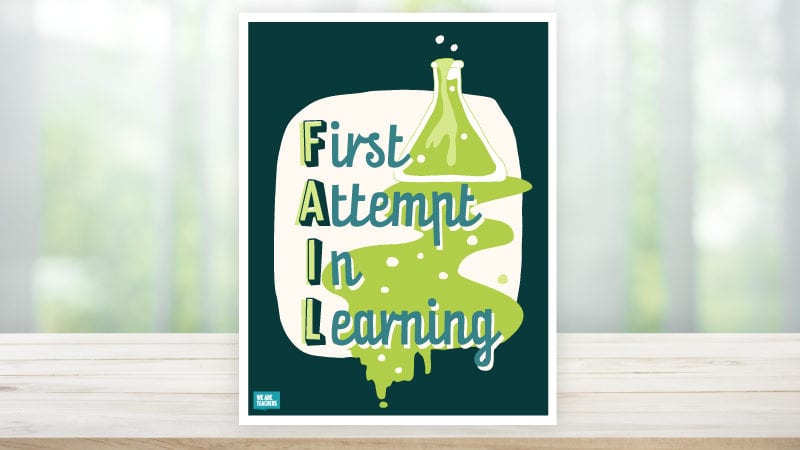
Looking for quick growth mindset decorations for your walls? Be sure to grab our free printable set of eight, with messages like “Mistakes Are Expected and Respected.”
Learn more: Free Growth Mindset Posters To Show Students the Power of “Yet”
11. Keep a growth mindset journal
Use bullet journaling or a more traditional style to reflect on personal goals and progress. Students can try habit trackers and goal-setting pages to keep track of what’s important and how their journey is going. Encourage them to take time to write about how they’re feeling, and look for ways to recognize successes big and small.
Learn more: Inspiring Bullet Journal Ideas to Try
12. Stretch your brain

Science says that brains get “stronger” the more we use them! This fun book about the brain explains the science behind the growth mindset, explaining why it really does work. Students learn how the brain functions, and how it continues to grow and change throughout our entire lives.
Buy it: Your Fantastic Elastic Brain
13. List things you can’t do YET
When you add “yet” to a fixed mindset statement, it can really change the game! Ask students to brainstorm some things they can’t do yet, and list them on a big piece of chart paper to post on the classroom wall. From time to time, revisit the list and update it to show your students’ progress.
14. Sing about it
Whether you check out an old classic like Big Bird’s “Everyone Makes Mistakes,” or enjoy a tune geared toward younger generations, these are the kinds of songs that get stuck in kids’ heads and reinforce the important message that it’s OK to make mistakes, as long as you learn and grow from them.
15. Work together in an escape room
Any escape room activity can encourage students to try new ideas and work together to figure out the answers. You can buy escape option kits from a variety of sources, or use our guide to put together your own.
Learn more: How To Set Up and Run a Classroom Escape Room
16. Experiment with coding and robotics
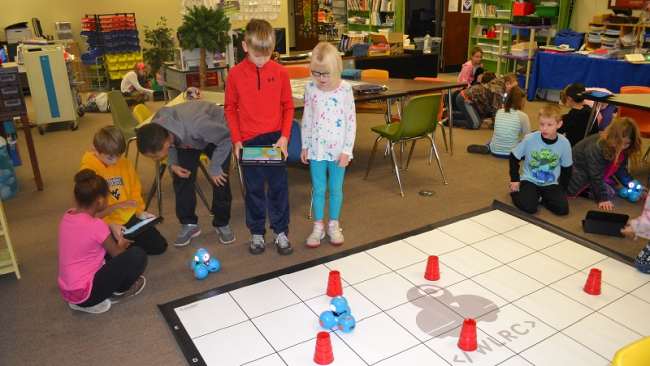
When students learn to code, “What if we try this?” becomes their go-to phrase. As you give your students the time they need to discover what works, the reward is in the process. Student coders become master revisionists, which allows them to deepen creativity to find success.
Learn more: Ways Coding and Robotics Build a Growth Mindset in Your Students
17. Flip a flop: turn negatives to positives
Anybody who watches HGTV is familiar with the idea of flipping a house. People buy a cheap house (a flop) that needs a lot of love, then spend time, effort, and hard work (and more money) to improve it (the flip). When it’s done, they’re able to sell it at a big profit. We can all learn to do that with our own flops, flipping them into opportunities instead. Try using this example and language with your students; you can even watch an episode of a show like “Flip or Flop” together!
18. Create an alternative progress report
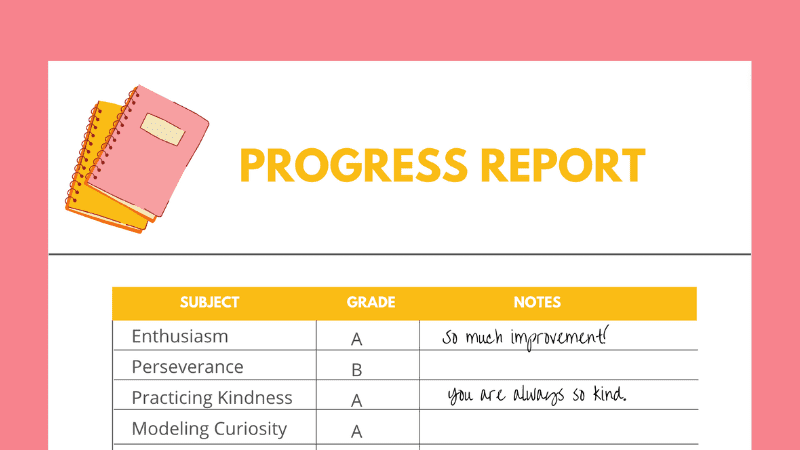
There’s value in the traditional letter grades, but they definitely don’t tell the whole story about a student’s progress. Grades are more about the end accomplishment, not the hard work that got a student there. Try using an alternative report that emphasizes growth mindset behaviors, like perseverance and hard work.
Learn more: I Created an Alternative Progress Report To Show My Student’s Growth—Outside Academics
19. Seek out famous failures
Chances are good your students know the story of gymnast Simone Biles and her amazing comeback after a very public “failure.” So many famous people only accomplished their dreams after many years of trying. Share some famous failures with your students, then have them round up more famous failure stories on their own.
Learn more: 16 Famous “Failures” of Wildly Successful People at Reader’s Digest
20. Use a growth mindset workbook
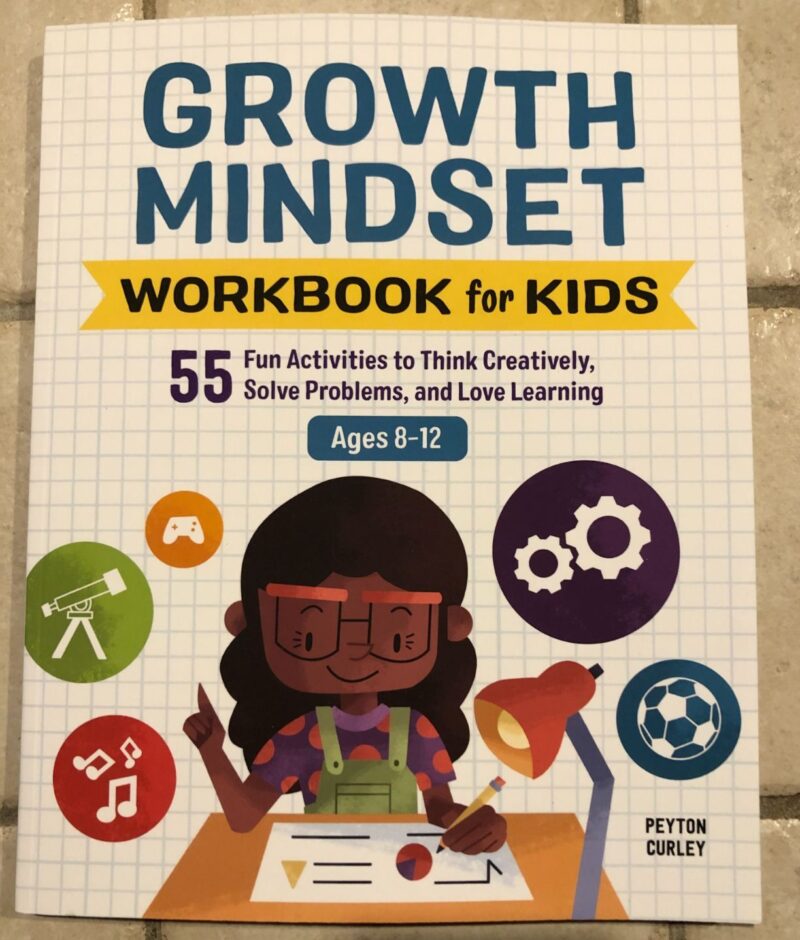
When you need some low-prep, ready-to-go growth mindset activities, turn to a workbook full of ideas. It’s worth it to spend a few bucks up front to have a whole collection of tools in your toolbox.
Buy it: Growth Mindset Workbook for Kids and The Growth Mindset Workbook for Teens at Amazon
21. Analyze your errors
Mistakes are OK, because we can learn from them. When students get the answer wrong or aren’t able to do something they want or need to do, encourage them to look back at their errors. Reflect on what went wrong, and use that knowledge to try again. You can even do this as a classroom activity, calling out specific questions that many students missed on a recent test (without naming names). Work together to determine not only the correct answer, but the specific mistakes that led to the wrong one.
22. Fail early, fail often, fail forward
Will Smith has a truly meaningful message for kids and teens: “Failure actually helps you recognize the areas where you need to evolve.” Share his quick video with students when they need a reminder of this key concept.
23. Use growth mindset exit tickets
At the end of a lesson or day, use a growth mindset–oriented exit ticket. Pose a question like “What can you do now that you couldn’t do at the beginning of class?” or “What do you find most challenging about this topic, and how will you work to overcome the challenge?”
24. Play a growth mindset game
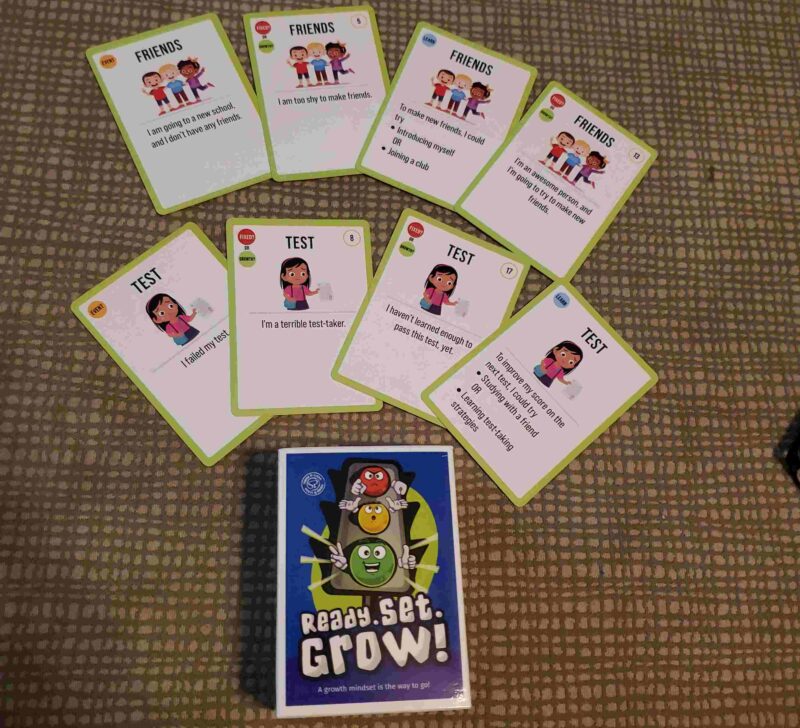
When you come down to it, nearly every board game encourages a growth mindset. You have triumphs and setbacks, but the only way to win is to keep playing. Some companies have developed games specifically to teach growth mindset to kids and teens, and they can be a great addition to your classroom game shelf.
Buy it: Ready. Set. Grow!
25. Glow and grow
Here’s another way to set growth mindset goals, while also celebrating successes. Create a two-column chart, with one column labeled “Glow” and one called “Grow.” On the “Glow” side, kids list recent accomplishments they feel good about, as well as the efforts it took to achieve them. On the “Grow” side, they list opportunities to do even more, creating a list of things they can’t do YET but will be able to soon!

